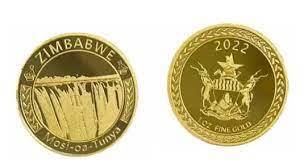
Please consider the following two bits of news. First, head of Russia's Foreign Ministry, Sergei Lavrov, in the midst of these uncertain times, takes the time to visit Africa. His itinerary includes Egypt, Uganda, Congo and Ethiopia. Second, Russia proposes a new international standard for trading in precious metals: the Moscow World Standard (MWS) which will become an alternative to the London Bullion Market Association (LBMA) which systematically manipulates precious metals markets to depress prices. According to Russia's Finance Ministry, this new, independent international structure is necessary for "normalizing the functioning of the precious metals sector" and its creation is "critically important."
The basis of this new structure will be a new, specialized international precious metals brokerage headquartered in Moscow, which will rely on the MWS. Also proposed is a committee for fixing precious metals prices composed of central banks and largest banks of countries that are members of the Eurasian Economic Union (Armenia, Belarus, Kazakhstan, Kyrgyzstan and Russia) that currently have a presence on the precious metals market.
According to the Russian Finance Ministry, precious metals prices will be fixed either in the national currencies of key member-countries or using new monetary units used in international trade—for instance, the new BRICS currency proposed by Putin.
The Finance Ministry wants to make membership in this organization attractive to all market participants, especially China, India, Venezuela, Peru and other South American countries, as well as Africa. It aims to swiftly destroy the monopoly of LBMA and to provide for stable development of the precious metals sector.
In essence, Russia proposes to create a market for gold, platinum, etc., which will be regulated by countries that control the resources for these metals. This would be, simply put, a revolution. On the basis of this new market, it intends to further the system of bilateral trade in national currencies that specifically excludes dollars, euros and pounds.
And now, some statistics on the world gold supply. The production share of the US and other hostile nations* produce a grand total of 22% of the world's gold. Eurasian Economic Union, BRICS and Africa, together, produce 57%—already a controlling share. Now add Peru and Venezuela, and the number goes up to 62%.
To put it in the plainest terms possible, Russia is colluding with a number of other countries to exclude the dollar, the euro and the pound from the system of international settlements, starting with precious metals but not necessarily stopping there. These countries control a lion's share of gold production. For starters, Russia has fixed the price of gold in rubles at 5000₽/g, which works out to $2,447.17 per troy ounce. This compares rather favorably to the current LBMA fix of $1,737.84. The days of LBMA's ability to drive down gold prices using paper gold manipulation appear be nearing the end.
A related bit of news: Zimbabwe, that poster boy for hyperinflation, just introduced into circulation a gold coin.
*Unfriendly countries make up just 15% of the world population and currently include Albania, Andorra, Australia, Bahamas, Canada, Croatia, Czech Republic, Denmark, Greece, Guernsey, Iceland, Japan, Liechtenstein, Isle of Man, Micronesia, Monaco, Montenegro, New Zealand, North Macedonia, Norway, San Marino, Singapore, Slovakia, Slovenia, South Korea, Switzerland, Taiwan (part of China), Ukraine, United Kingdom (including Jersey, Anguilla, the British Virgin Islands, and Gibraltar), United States, and European Union (Austria, Belgium, Bulgaria, Cyprus, Estonia, Finland, France, Germany, Hungary, Ireland, Italy, Latvia, Lithuania, Luxembourg, Malta, the Netherlands, Poland, Portugal, Romania, Spain, Sweden and Czech Republic)
No hay comentarios:
Publicar un comentario